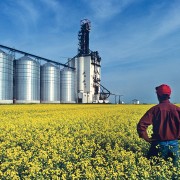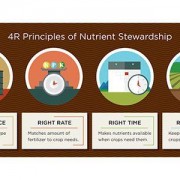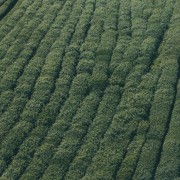Outlook for Cash
The biggest issue that I am working on with clients right now is cash. Cash continues to be tight at the farm gate, and our ability to predict cash flow is, as it always is, difficult. Even when we can contract grain sales with an adequate price and delivery date, the likelihood of actually being able to deliver as per the contracted date is often low. The challenges of managing debt and payables under those type of situations can be debated for days. We won’t berate it now.
As we look back over the last few years, we can identify what led to the current cash shortages. There is no point chiding anyone for those past decisions. What is in the past cannot be changed; we must acknowledge it and learn from it. After all, if we don’t learn from history, we’re doomed to repeat it.
Here are 3 strategies for managing cash as developed from my years in commercial lending and working with farmers on financial management:
Be conservative with projecting cash inflow.
Cash outflow has been allowed to increase lock step with, and sometimes outpacing, increases in cash inflow. This despite everyone knowing that farm cash inflow can be as unpredictable as the weather. Now we see many operations that are facing cash inflows like 2008 on required cash outflows of 2016. Calling the situation “tight” is at times an understatement.
Consider your lowest profit year in the last 10 years, and use your cash inflow from that year to compare it against your required cash outflow for 2016. How does that make you feel?
Protect working capital.
Recently, I tweeted, “Asset rich and cash poor will not suffice through this next cycle.” Many farms have squandered their opportunity to fill their working capital war chest because of large assets acquisitions and taking on significantly more debt for those acquisitions. Now, many of those same farms are borrowing every penny needed to operate the farm through a growing season. Working capital will be the greatest source of opportunity in the coming years. Access to adequate working capital could be the most limiting factor.
I read a piece recently that interviewed Dr. David Kohl (who I’ve quoted in the past.) Dr. Kohl says that his belief is the 60:30:10 profit plan. Of your farm’s profits, he says that 60% should go to growing the farm and making it more efficient, 10% to dividends, and 30% to working capital. Considering the general lack of working capital on currently on the farms, I suggest that the rule, in the short term anyway, be more like 80/20 with 80% of profits going towards building working capital and 20% going towards growth and efficiency; dividends might just have to wait.
Actually create and maintain a running cash flow statement.
Going through the exercise of constructing a monthly cash flow statement is often an “A-Ha” moment. Being able to clearly identify where and when your cash is flowing helps you understand how and when to best use operating credit, plan grain sales, or structure payment dates. While it is not new news anymore, it is worth repeating: set your payment dates for when you’ll actually have cash!
This is also a beneficial step to improving the relationship you have with your lender. When you can look your lender in the eye and tell them exactly how much operating credit you need, when you’ll need it most, and when you’ll pay it back shows that your focus on management is meeting their expectations.
Direct Questions
What changes would you make to your 2016 plans if you knew your cash inflow would be similar to your worst year in the last 10?
How have you invested your profits? How will you invest future profits?
What does your 2016 monthly cash flow projection look like?
From the Home Quarter
The outlook for cash will reach critical importance in the near future. Working capital will be the fuel for your growth in the coming years. Equity is the backstop. Equity does not pay bills, cash does. When cash is gone and unlikely to return, tapping into equity can replenish working capital, thus the “backstop.” The chase for equity over the last several decades in an effort to be “asset rich and cash poor,” like it was a badge of honor or something, has created a generation of farmers who would prefer to be rid of debt to the detriment of working capital. It might be possible to finance growth and expansion without cash, but it is not possible to operate it.










